Unveiling The Mysteries of Pure White Betta Fish
Have you ever heard of a fish so rare that it’s like a mythical creature? Well, white betta fish might just be one of them!
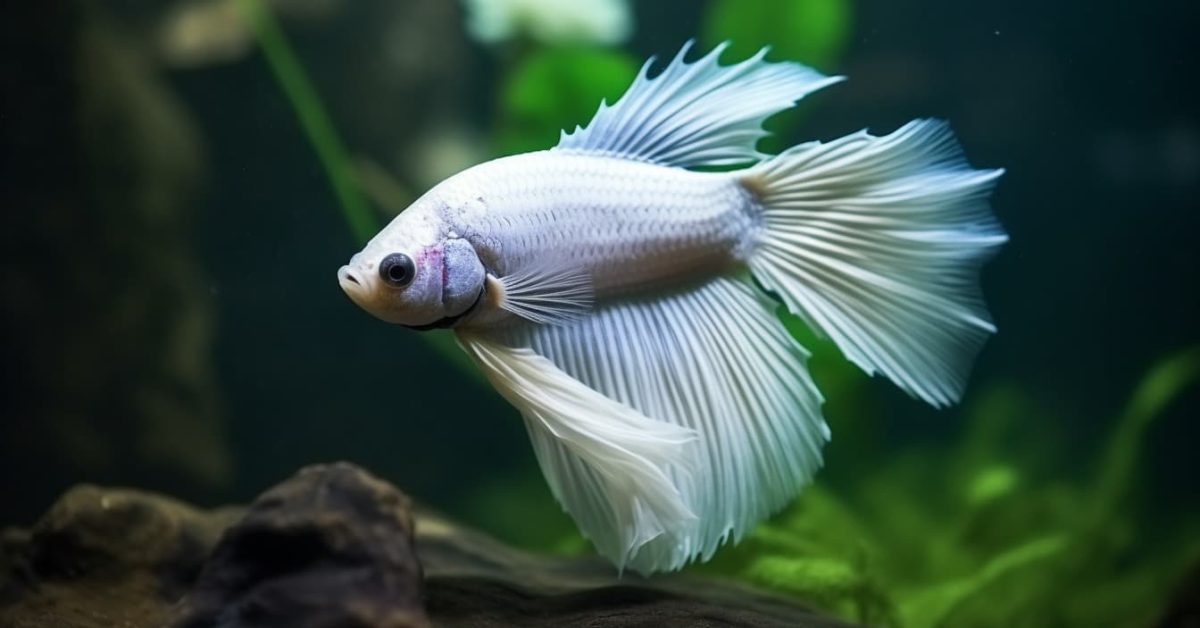
With their beautiful white coloration, they’re the fish equivalent of unicorns. But are they real, or just a fairy tale? In this article, we’ll dive into the world of white betta fish and explore the truth behind this rare phenomenon.
Table of Contents 🦑
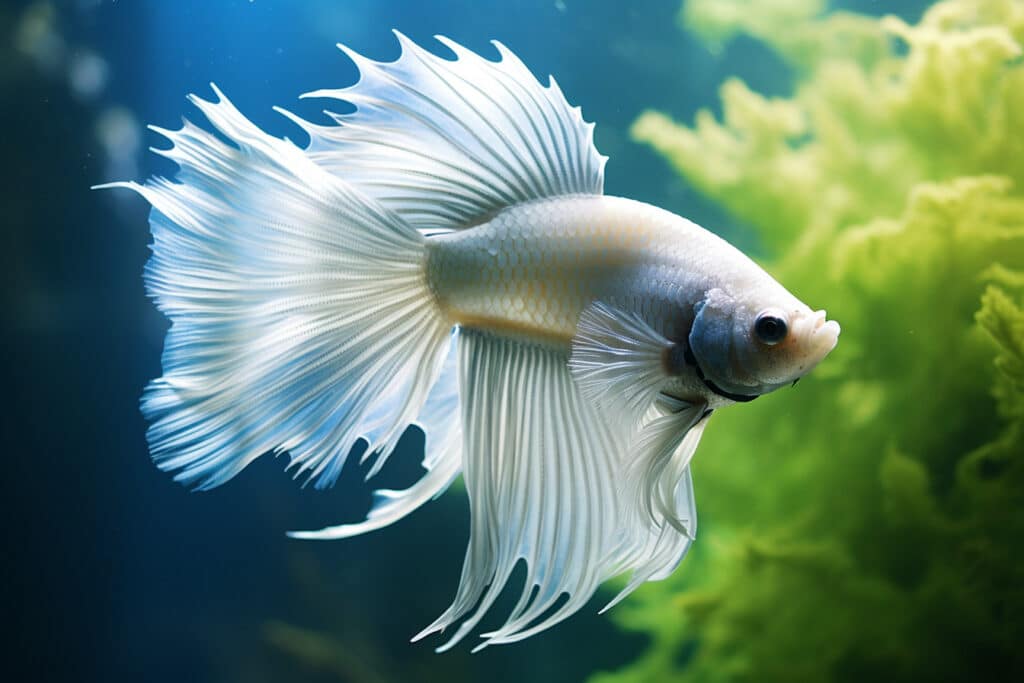
The Reason Behind The White Color of Betta
Hey, so I heard you were curious about why betta fish can be white. White betta or Albino betta fish have a genetic mutation that affects the production of pigments in their skin cells.
Unlike other betta fish, which have a variety of colors caused by pigments, white bettas have very little or no pigment in their skin cells, which results in their pure white coloration. This genetic mutation is rare and requires careful breeding to produce pure white offspring.
White betta fish are commonly referred to as “White Opal Betta Fish” because of their unique coloration, which resembles that of white opal gemstones. The fish has a pure white base color, but their fins and scales can have a very faint pink or iridescent sheen, giving them a milky or opalescent appearance.
The white coloration in betta fish is a result of betta genetics and selective breeding by enthusiasts, By carefully choosing which betta fish to breed based on their coloration, breeders can create new color variations and patterns, which leads to the development of many different colors and patterns in these fish, including the stunning white opal bettas color.
It all comes down to these little things called chromatophores, They’re like little pigment cells in the skin of the betta fish, and they’re responsible for all the amazing colors and patterns you see on their bodies.
One special chromatophore is called “Iridophore”, This dude is the one in charge of that awesome white shade, they are found in the uppermost layer of the skin and contain stacks of reflective plates that are arranged like a crystal lattice. When light hits these plates, it is refracted and scattered, creating that unique and mesmerizing white color. They’ve got these tiny reflective plates that scatter light and make that cool color happen.
There are many types of white betta fish out there, but one of the most beautiful is the Half Moon white betta. As the name suggests, these fish have tail fins that resemble a half-moon shape, which is quite stunning when paired with their white coloration. The Half Moon betta is known for its beauty and elegance, with its long flowing fins that can make it look like it’s floating in the water
Do White Bettas Stay White?
White bettas do not always stay completely white throughout their lives, sometimes, they may develop darker pigmentation or spots as they age, additionally, environmental factors such as water quality, lighting, and diet can also affect the coloration of white bettas.
However, with proper care and attention to these factors, it is possible to maintain the white coloration of a betta fish.
How Long Do White Betta Fish Live?
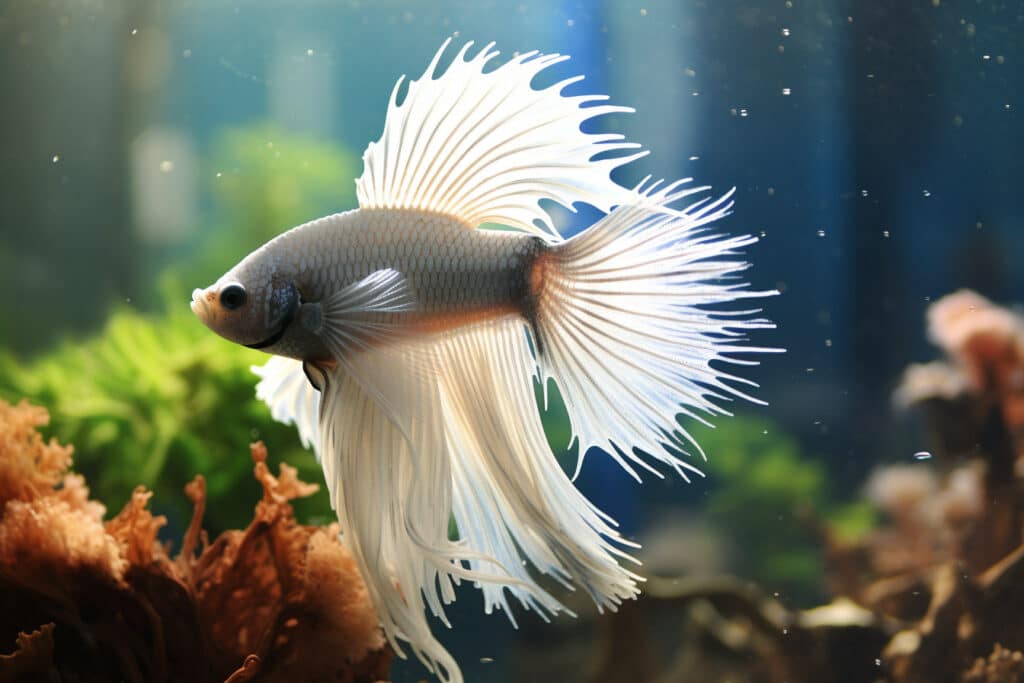
The lifespan of a white betta fish can vary depending on several factors, such as the quality of care provided, genetics, and environmental conditions. Generally, if they are given proper care and kept in a healthy environment, they can live up to 3-5 years.
However, some white bettas have been known to live longer, up to 7 years or more. To ensure a healthy and long life for your white betta fish, it is essential to provide them with a well-maintained tank, proper nutrition, and regular check-ups with a veterinarian, it’s important to avoid overfeeding and keep the water clean and free from toxins.
Keep an eye on your white opal betta’s color if it starts looking slightly duller or more faded than usual, there could be a health problem, but with a healthy diet and proper care, your white betta fish can thrive and bring joy to your home for many years.
How Much Does a White Betta Fish Cost?
The cost of a white betta fish can vary depending on several factors, such as the breeder, the rarity of the specific strain or genetic line, and the overall quality of the fish.
In general, white bettas tend to be more expensive than other colors due to their rarity and high demand among collectors and hobbyists.
On average, you can expect to pay anywhere from $20 to $50 for a basic white betta, while rare and high-quality specimens can cost upwards of $100 or more. Additionally, purchasing from a reputable breeder or pet store can increase the price, but it also ensures that you are getting a healthy and well-cared-for fish.
White Bettas Breeding.
Breeding pure white bettas is no small task and requires a lot of knowledge and effort. To breed pure white offspring, both the male and Female bettas need to have the white color gene.
If both parents carry the gene, there’s a higher chance that their fry will inherit this trait and display a pure white fish coloration.
However, even when mating two white bettas, the resulting fry may not all turn out completely white due to the complex genetics involved in the process.
Breeding white bettas requires patience, practice, and a willingness to experiment. As responsible fish owners, it’s crucial to avoid stressing out your fish by forcing them to breed too often. If you’re a beginner fish breeder, it’s recommended to learn about this process, betta fish behaviors, and their unique attributes.
To breed white bettas, you’ll need a separate tank with enough space (At least 10 Gallon Tank), clean water, and a divider to keep the male and female bettas apart at first. Providing moss and Indian Almond leaves for the male bettas to create tiny bubbles for their Bubble nests.
In conclusion, as betta fish keepers, breeding pure white or white opal betta fish requires knowledge, patience, and a willingness to experiment. When breeding betta males and females, it’s crucial to closely monitor them to prevent any harm.
A separate breeding tank with a divider for the female betta can aid the process, and once the fry hatch, removing the male betta from the same tank can help ensure the safety of the offspring. it can be a rewarding experience.
White Opal Betta Fish Care
So you’ve got yourself a gorgeous white opal betta fish, huh? Well, get ready to be amazed by this little creature’s unique personality and stunning appearance. Betta fish require a bit of attention and care but don’t worry, it’s not too difficult.
Understanding The Natural Habitat of The Siamese Fighting Fish.
Let’s start with the basics, The white betta fish, also known as the white Siamese fighting fish, is native to Southeast Asia.
In the wild, they can be found in shallow ponds, rice paddies, and slow-moving streams. They are known for their highly territorial behavior and are often referred to as wild bettas. These tropical fish thrive in warm water with a temperature range between 76-82°F (24-28°C).
In their natural habitat. Despite being popular as pets, these beautiful fish are endangered in the wild due to habitat loss and overfishing.
Create a Cool Aquarium for Your White Betta Pet.
A Betta’s aquarium is their sanctuary, their oasis of calm and serenity. Creating a beautiful and functional aquarium for your white betta is like designing a luxurious home that meets all their needs.
First, you’ll need an aquarium that is at least 5 gallons for a solo fish, which gives your betta plenty of room to swim around. Make sure to decorate the aquarium with plenty of hiding spots, with live plants. Bettas love exploring their surroundings, so a little castle or statue can be a great addition.
In manners of tank conditions, the water should be crystal clear with a pH level of 6.5 to 7.5 and kept at a temperature between 78-82 degrees Fahrenheit.
Don’t forget to add a heater and filter to keep the water clean and oxygenated. Lastly, add light to bring out the beautiful colors of your white betta. With all these elements in place, your white betta’s aquarium will be a place of comfort and joy for them to thrive in!
Silicone Betta bed leaves are designed to mimic the natural environment of Betta fish, offering them a place to rest and hide near the surface of the water.
Delicious Treats and Snacks for Your White Betta Fish
Feeding your white betta fish is a fun and exciting experience!
These little guys have huge appetites and will eat almost anything you give them. You can feed them with flakes or special betta pellets, but they love protein-rich foods like freeze-dried brine shrimp or blood worms.
Watching your betta hunt down their prey is like watching an action movie, and when they finally catch it, it’ll devour it like a gourmet meal. However, it’s important to avoid overfeeding them, as excess food can harm their health.
To keep your white betta a happy and healthy fish, make sure to provide them with dedicated betta food a balanced and protein-rich diet.
Ideal Tank Mates for A Happy Fish.
A white betta fish can make a great addition to a fish tank community, but it’s important to carefully consider potential tank size and mates.
While bettas can be aggressive towards other fish, there are some options for peaceful coexistence. Some great tank mates for white bettas include neon tetras, guppies, and cory catfish. These fish are small, colorful, and active, making them great companions for your betta. It’s important to choose fish that have similar water temperature and pH requirements to your betta, so be sure to do your research beforehand.
With the right mix of fish in your community tank, your white betta can live a happy and fulfilling life alongside other fish friends.

Get Your White Betta Fish a Fashionable Home and Decorative Tank.
Your white betta deserves a fun and stylish home, so it’s important to decorate their tank accordingly!
First, you’ll need to choose a substrate that will cover the bottom of the tank. Gravel in white fluttering color is a popular option, but sand or even small rocks can also work well.
Next, add some plants to give your betta some privacy and hiding places. Live plants such as java fern, marimo moss balls, or Anubias are great options. Fake plants are not recommended because they can harm the betta’s fins, but if you do want artificial plants, just use silk plants, they are fin-friendly and can also add color and personality to the tank.
Don’t forget to add some hiding spots, such as caves or driftwood. These will give your betta a place to retreat when feeling shy or stressed. Adding some aquarium-safe decorations, such as a castle or sunken ship ornaments, can also make the tank look more interesting. Just make sure they’re not too sharp or dangerous for your betta!
Finally, consider adding a bubble stone or other type of aquarium air pump to add oxygen to the water and create a fun and calming ambiance for your white betta.
To sum it up, having a white betta fish is an enjoyable and fulfilling experience. To ensure your betta’s well-being, it’s essential to provide them with a well-balanced diet, compatible tank mates, and a cozy and attractive environment. Don’t forget to do your research before introducing anything new to their tank, as it may negatively affect their health. With proper care, your white betta can enjoy a long and satisfying life with you.
With a little bit of effort, you can create a beautiful and functional home for your white betta and watch it thrive.
In Conclusion
As our article comes to an end, I want to thank you for the opportunity to share my knowledge and thoughts about the world of white betta fish. I hope I was able to provide you with some valuable information that you can use to take better care of your beloved bettas or perhaps even inspire you to start your betta fish collection. I wish you and your finned friends all the best!

Delighted to have you here at BettaReef! This place is a treasure trove of knowledge about Betta fish, Betta Care, Health, Gear, and much more from the wonders of aquatic life. My journey in this fascinating world began when I was just 8, and now, as a seasoned hobbyist, I’m here to help fellow Betta enthusiasts create a thriving Betta environment for a healthy life.
I’m committed to delivering high-quality content, backed by a stringent editorial process. Each product review is based on real-life usage and practical analysis, ensuring that you get insights and advice that truly matter.
Related Blog Posts:
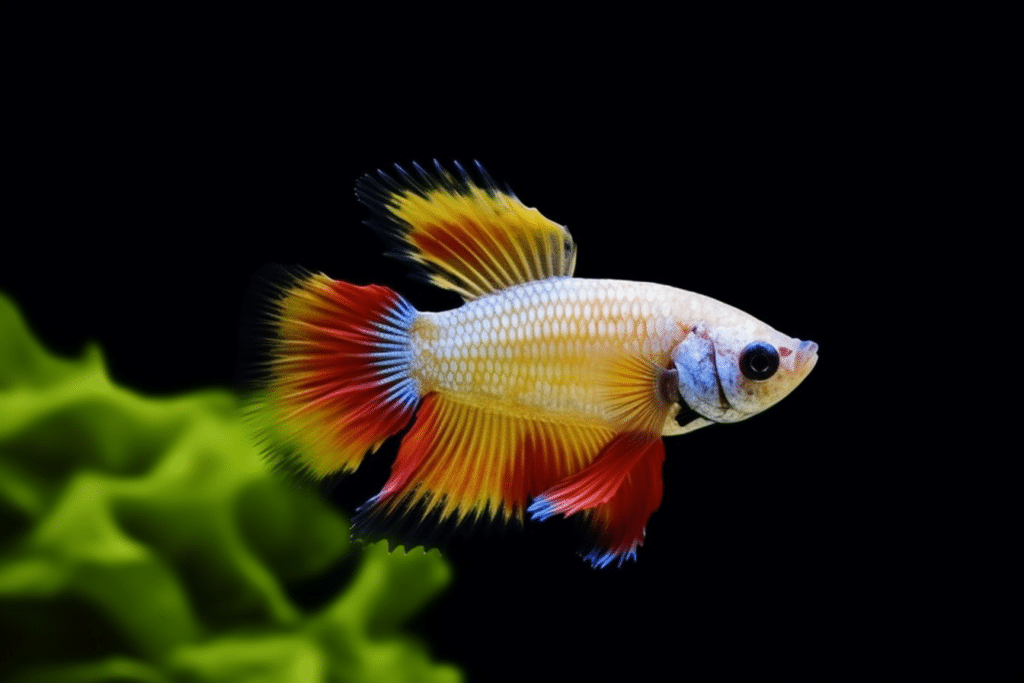
Discover Plakat Betta Fish Aquatic Elegance
Home Discover Plakat Betta Fish Aquatic Elegance Welcome to the captivating world of Plakat Betta
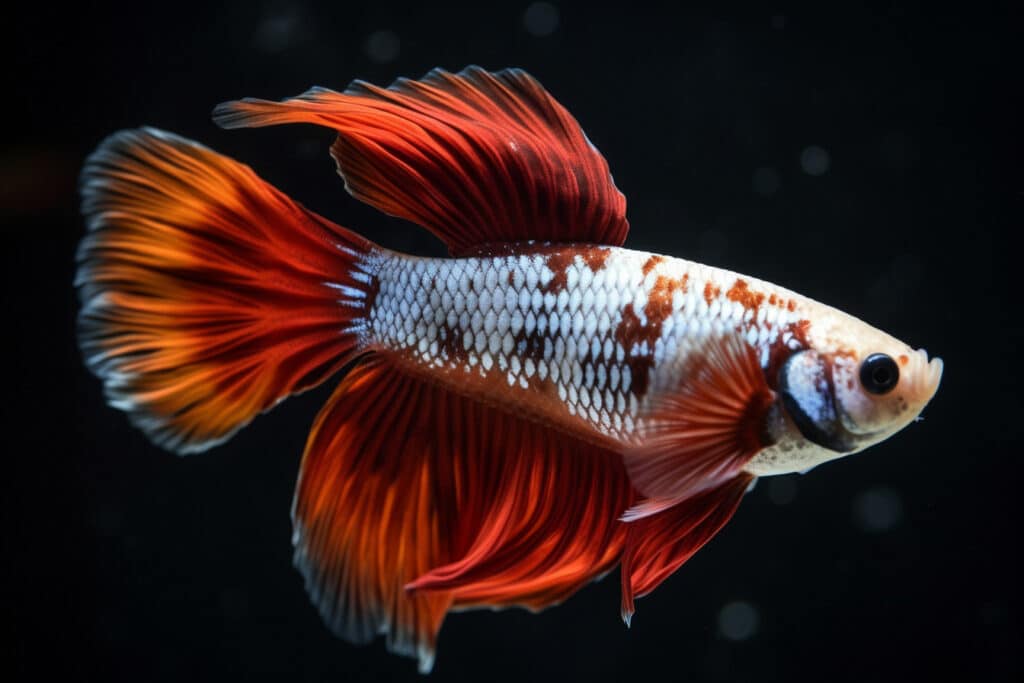
Koi Betta Fish Nature’s Aquatic Wonder Unveiled
Koi Betta Fish Nature’s Aquatic Wonder Unveiled Get ready to dive into a blog post
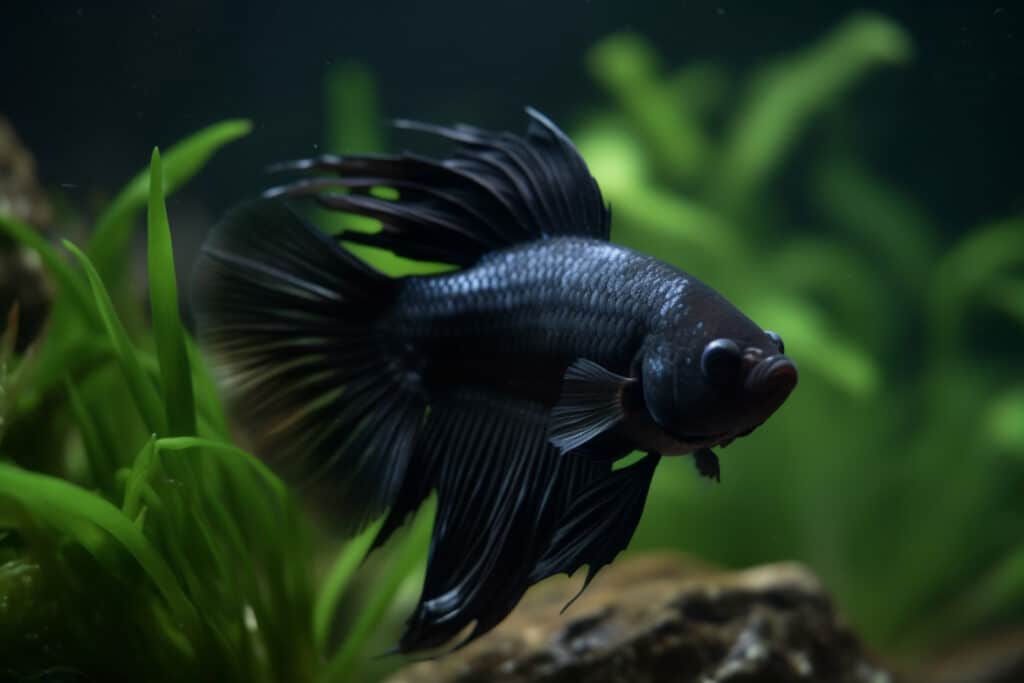
Black Betta Fish
Swim To 🤿 Home The Magic of Black Betta Fish Beauty and Care The aquatic

